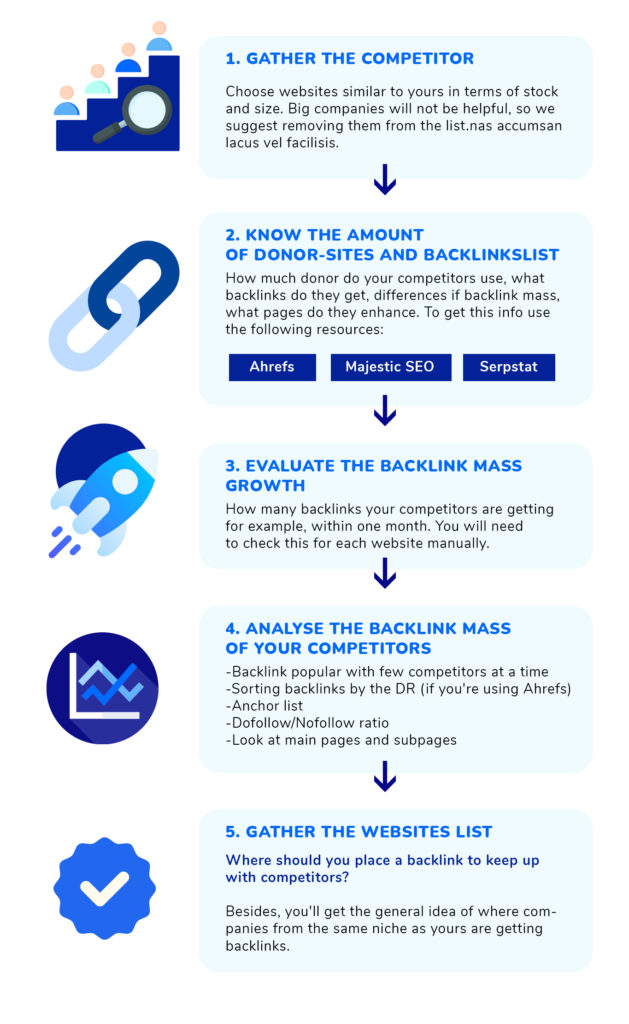Purchasing links haphazardly can be worse than not purchasing any at all, especially in situations where it’s necessary to optimize expenses. Before starting to buy links, it’s essential to thoroughly think through the link-building strategy, soberly assessing the desired effect in accordance with the available budget.
It’s best to start with analytics – familiarize yourself with the main competitors and parameters of their sites. The methodology recommends removing large businesses from the sample, as they can obscure an accurate assessment of the overall picture.
For analysis, you can use any convenient tools: Ahrefs, Serpstat, CheckTrust, Keys.so, Majestic, SEMrush.

Link Builder’s Checklist – How to Choose Donor Sites
Random link purchasing is worse than not purchasing any at all, especially when you need to optimize costs. Before starting to buy links, you need to carefully think through the link-building strategy, realistically assessing the desired effect according to your budget.
Analysis Stages:
- Enter competitor domains into a service and look at the number of links. You will get a summary table with donor domains and outbound links from the site.
- Aim for these target link metrics to be on par with competitors.
- Look separately at the main and non-main pages – this may reveal some niches in the semantic core that you haven’t covered yet.
- Assess the pace of link growth – how many new links appear over a certain period, such as a month. This parameter will need to be manually checked for each site.
- Study the anchor list separately. Note that in the table, anchors are not divided into informational and other types. Also, look at the combination of Dofollow/Nofollow links.
- Analyze your competitor’s link lists. You can create a summary table and look for intersections – links popular with several competitors. Or simply analyze links and find new ideas for link building. Start by sorting them by the DR parameter (if using Ahrefs), and you will immediately find paid links used by competitors.
- Eventually, you will compile a list of resources where you definitely should place a link to keep up with competitors. Plus, you’ll get a general idea of where sites in your niche get their links.
Following these simple rules will help optimize your expenses on link promotion, avoid mistakes in new projects, and pick the best links for competitive link building.
Link Building and Expanding the Link Profile is an Endless Process.
You need to continuously expand ideas, search for donors, check quality, build links, then analyze new competitors, take their ideas as a basis, and work on them.
Remember, sometimes it’s easier to buy a link than to reinvent the wheel and spend time acquiring it. Often, many purchased links can be found among top competitors. This indicates that buying links is not bad and they work. Lastly, to avoid accidentally falling under search engine filters, build links according to a premade plan.



